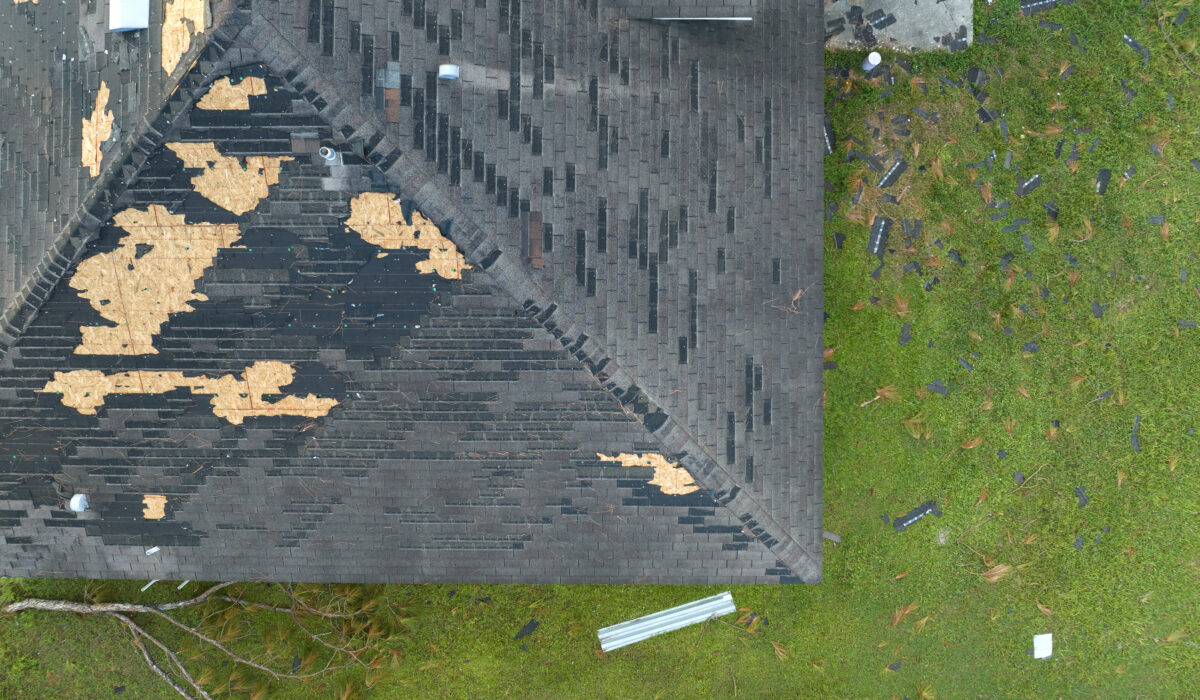Vermont is known for its peaceful towns, scenic mountains, and charming countryside. But if you’ve lived here long enough, you know that the weather can be unpredictable—and sometimes downright rough. From heavy snow and ice to sudden summer downpours and windstorms, Vermont homes take a beating year-round, causing thousands of dollars in storm damage. And the first part of your home to feel that impact? Your roof.
Your roof acts as your home’s first line of defense against the elements. It shields your family from moisture, wind, and extreme temperatures. But over time, even the most well-built asphalt shingle roofs can wear down under the stress of Vermont’s climate. In this guide, we’ll walk through how storms can damage your roof, the early warning signs to watch for, what to do after a storm, and when to call a roofing contractor for help.
How Vermont Weather Puts Stress on Your Roof
Heavy Snow and Ice: Vermont winters are long and harsh. Snow buildup adds weight to your roof, while ice dams can form along the edges, causing water to back up under the shingles. Over time, this can lead to roof leaks and even structural damage.
Freeze-Thaw Cycles: Repeated freezing and thawing causes expansion and contraction in roofing materials. This constant shifting can loosen asphalt shingles and open up small gaps where moisture can seep in.
Windstorms: Wind can lift or tear shingles completely off your roof, especially if the shingles are already aged or loosely fastened. High winds can also cause debris, such as tree limbs, to fall and cause direct impact damage.
Heavy Rain: Rainstorms can exploit even the smallest weaknesses in your roof. A single missing or cracked shingle can allow water to seep beneath the surface, leading to mold, rot, and insulation damage.
Summer Heat and UV Exposure: While not as dramatic as a storm, prolonged UV exposure can dry out shingles and cause them to curl, crack, or become brittle—leaving your roof vulnerable to sudden damage.
Signs of Storm Damage on Asphalt Shingle Roofs
After a storm, it’s crucial to inspect your roof—or have it inspected by a professional—to catch early signs of damage. Some warning signs include:
- Missing, cracked, or curling shingles
- Granule loss (look for shingle particles in your gutters)
- Visible leaks or water stains on ceilings or walls
- Sagging roof areas
- Loose flashing around chimneys or vents
- Debris or fallen branches on the roof
Keep in mind that storm damage isn’t always visible from the ground. A professional roof inspection may reveal hidden issues that could turn into major problems later.
What to Do After a Vermont Storm
- Check for Visible Damage: As soon as it’s safe, do a visual check from the ground. Use binoculars to spot missing shingles or displaced flashing.
- Look Inside Your Home: Water stains on your ceilings or attic insulation are signs that your roof may be leaking.
- Document Everything: Take photos of any visible damage. This documentation will help you with your insurance claim if needed.
- Call a Roofing Contractor: Even if the damage seems minor, it’s smart to have a Vermont roofing contractor do a thorough roof inspection. They can assess the full extent of the storm damage and recommend the appropriate roof repair or replacement options.
The Role of Professional Roof Inspections
A professional roof inspection is your best defense after severe weather. Vermont roofing contractors know what to look for and understand how local weather conditions impact asphalt shingles. During an inspection, they’ll check your roof structure, underlayment, and ventilation to ensure everything is intact.
Professional roof inspections are also essential if you’re planning to file a homeowners insurance claim. Roofing experts can provide detailed documentation and help make your case to the insurance company, increasing your chances of coverage for roof repair or replacement.
Preventing Future Roof Damage in Vermont
Storms are unavoidable, but damage doesn’t have to be. Here’s how to reduce the risk of future storm-related roof issues:
- Trim overhanging tree limbs to prevent branches from falling onto your roof.
- Clean gutters regularly to avoid water backup and ice dams.
- Schedule seasonal roof inspections, especially in spring and fall.
- Replace aging shingles before they become a problem.
- Check attic ventilation and insulation to prevent ice dam formation in winter.
If your roof is over 15 years old, it might be time to start planning for a roof replacement. Vermont roofing contractors can help assess whether your asphalt shingles are nearing the end of their lifespan.
Stay Ahead of Storm Damage with a Vermont Roofing Contractor
Vermont weather isn’t going to let up, but with the right care and vigilance, your roof can handle it. By learning the signs of storm damage, taking action quickly, and working with a trusted local roofing contractor, you can protect your home from bigger issues down the road.
If you suspect your roof may have storm damage or want peace of mind before the next storm season, schedule a roof inspection today. Being proactive now means fewer headaches later—and a stronger, safer home for years to come.


